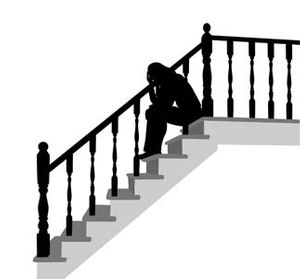Stairway Falls
Stairway Falls

As a personal injury attorney in Los Angeles, Halpern & Associates specializes in helping those injured from falling down stairs due to the negligence of others. The key component in bringing your stairway fall case to fruition is proving that someone owed you a duty of care to keep the stairs maintained and reasonably safe.
You must prove that the responsible party did not fulfill their duty by not keeping the stairs safe, that you suffered injury because of the fall, and that your injuries are directly related to the fall and not some pre-existing injury or something that happened after the fall.
The most common stairway falls we have handled have to do with slip and falls. Most if not all of these slip and fall cases have to do with liquid being negligently left on the steps. Sometimes liquid is unavoidable, such as when you have exposed steps to natural elements, such as rain, snow, etc. But in these circumstances, the building owner and management must take reasonable precautions to keep the steps safe and non-slippery. This is done in many ways; one option is sticking slip resistant tape to the edge of each step. Another more expensive and rarely seen option is composing the step of actual sand- or grain-type material to give the step a naturally slip-resistant quality.
DID YOU SLIP DOWN A STAIRWAY?
If so, here is some of the evidence you should gather immediately! Remember, see our blogs in order to get step-by-step procedural outlines on things to do after a slip and fall accident. Also, remember that your cellphone is your best evidence-gathering tool, and most people carry it with them at all times.
- Figure out what liquid, debris, or substance caused you to fall.
- Make sure you report the accident immediately to building management or the owner, and make them fill out a report. If they refuse, you could call the police and have them come and give you a report. If that fails, write down a detailed report yourself, sign it, and keep it for your records.
- Use your cellphone! Take video and photos of where you fell, what caused you to fall, and what your were wearing. Record any witnesses, the manager if they allow you to, and your surroundings. Look to see if there are any surveillance cameras that may have caught the fall.
- Call us. There are literally more than 50 other points we could list here. We’re experts, and that’s why Halpern & Associates is your best choice. We can guide you through the legal process, and the faster you get us on the phone, the faster and more efficiently we can handle your case. We will respond immediately. Why? Because like most people these days, we always have our cellphones!
- Lastly, sometimes you can’t do any of the above because your injuries are too severe. In this scenario, your health obviously comes first, so take care of your injuries immediately. A qualified stairway fall attorney will help you put the pieces of the puzzle together later.
*Sometimes trip and fall accidents occur where someone stumbles down some steps or even up the steps. You may think, “Hey, it’s just an accident and I should have been looking where I was going.” Although this may be true in certain circumstances, there are instances where you find negligence in the actual stairway construction. Contractors have to follow strict rules when building stairways. These rules are set forth in code sections that they all have to follow. The front and back of the actual step are called “risers and runners”. Riser and runner dimensions are all code-regulated, thus, if you have a building that literally has a couple of steps that are “too short,” “too long,” or “too tall,” this can present a trip hazard. The building owner is under a duty to follow the law.
Have you ever missed a step on to the floor or landing because you didn’t recognize the height difference? The most common way people don’t recognize the difference is because both the step and floor surface are the exact same material! It looks like an infinity pool, but unlike an infinity pool, you really do fall off the ledge if you’re not careful! This is also negligent on the part of the owner or management. Under code, a building owner has to differentiate different levels of flooring. How do they do this? By making the step a different color, the floor a different color, putting in lights to accentuate the difference, placing a floor mat, or by putting some tape at the end of the step. It can also work to put a plant next to the step to show where the stairs end.
Everything we talk about here comes from years and years of experience in these types of matters. If you feel that you have a case, contact us NOW!
